In this second chapter of The Don Diaries, we take a look at the impact that advancements in technology have had on the Western Australian beer industry, from the perspective of Don Baron – a legend of the industry and the dad of our founders, Liam and Trent Baron.
During his 37-year career in beer, Don has been there to experience each and every change, firsthand. In fact, it was his genius idea that prompted one of the biggest changes that draught beer has seen! We’ll take a look at some of the noteworthy industry changes that have happened during Don’s tenure!

Line size changes
In Western Australia the standard line size was 8mm. In most other states it was 9.5mm. In an attempt to reduce wastage & increase profit for the publican, we reduced the line size to 6.35mm up to a certain length of line. This allowed us to save 20mls of beer per metre of tubing. Compared to the Eastern States, this is a saving of over 40 mls of beer per metre. The aim was to reduce wastage, but maintain a good cleaning regime so that beer was always at its best quality.
FOBs (Foam on beer detector)
FOBs are used to detect an empty keg & shuts down the beer flow, keeping the beer line charged with beer until a new keg is tapped. Doing this minimises product waste by preventing the line from being filled with foam, and eliminates the need to refill the lines and purge the entire system.
Fobs were aimed at reducing the bad practice of multi-coupling (or banking) of kegs. The main aim was to ensure the customers got the best & freshest beer, whilst the venue also reduced wastage.
Over time stainless steel fobs have increased in popularity over plastic designs because stainless steel offers a significantly higher level of hygiene, and is a stronger & more durable alternative.
Glycol Chiller Plate Systems
Don embraced this technology from the first day that he was introduced to it. He was the first to install this system in Australia, in a venue at the west end of High Street in Fremantle many years ago, and it is still operating today.
Initially it was installed to operate half of the dispense system within the hotel, but within 3 months the publican asked for the remaining system to be converted to the chiller plate system.
Chiller plate systems are good for the environment and good for the pocket as they reduce operating cost by reducing the number of refrigeration units, and the size of the refrigeration units required to operate a hotel.
In reducing the number of refrigeration units and the size of refrigeration units, the amount of refrigerant gas and the amount of power being used was reduced too.
An easier way to maintain beer systems
A little over 15 years ago, low-frequency sweeping sound technology was introduced into the Australian cellar industry. This simple addition to beer systems had an enormous impact on reducing wastage and improving the quality of draught beer. Cellar Control is installed in the cool room over beer lines and works by inhibiting biofilm growth.
By treating the root cause of beer line contamination and eliminating the chance of spoilage, venues can now extend their line cleaning out to six weeks. The technology offers substantial reductions in beer wastage, chemical and water usage, labour and time. It’s worth noting that while Cellar Control is unlike anything else on the market, it still needs the right people to maintain the draught beer system, and to do the job properly.
Like any other new technology, there are also learnings to be had. In the early days it was installed and left unchecked. It also wasn’t partnered up with an appropriate cleaning chemical, so some were using inadequate chemicals, or no chemicals and some just left the cellar control to do the job. This brought about misunderstandings of what this system could really offer and do for the industry. Today, the system is supported with training, as well as chemical and electronic reminders of when the system is due to be cleaned.
As a long-time believer in weekly beer line cleaning, it took a long time for Don to adopt this technology, but time and time again the scientific lab tests proved the technology is more efficient at keeping lines clean than weekly cleaning. Eventually, Don came around to be a believer in the Right Beer Solution.
Insulated beer fonts
It’s safe to say that one of the most impressive changes in technology is insulated beer fonts, and Don was integral in this coming to life!
Back in the day, beer would travel from the cool room through exposed beer lines to the chiller that was under the bar, then to ambient temperature beer lines again before finally reaching the tap. This developed into glycol and chiller plate systems, reducing beer wastage by keeping lines chilled which got Don thinking that chilled beer lines straight to an insulated font would be a better way of keeping beer cold while reducing power usage as well.
After his idea was turned down by one equipment manufacturer, Don suggested it to another manufacturer who was keen to give it a crack and they’ve been used in venues ever since!
As more and more venues experience savings in wastage & power, more venues are converting from chilled fonts to insulated fonts. The insulated font loses none of the chilling & therefore provides a colder beer than a flooded/chilled font at less cost. Just another innovation to help the environment!
The basic purpose of the beer pump is to move beer from a keg to the beer tap. This is an alternative to using gas pressure to move the beer. The pump uses mechanical force to deliver the beer to the tap. Generally driven by compressed air and using an air compressor.
Although compressed air and an air compressor is used, it doesn’t mean that you don’t need gas anymore. You still require gas to be used on the keg to maintain the correct amount of CO2 in the beer, but at low pressure.
Instead of using mixed gas & getting about 15 to 18 kegs out of a bottle of gas, you can now use straight CO2 & get about 100 kegs out of one bottle of gas.
This is another great idea to reduce the carbon footprint & save money. However, like everything, there is a cost to do this. Based on savings to be had on gas bottles, you would need to be doing about 7 to 8 kegs a week to recover the outlay over 2 years.
Safe and remote monitoring
The introduction of Australian Standard AS5034 in 2005 saw regulations come into effect for the safer installation, handling and maintenance of compressed and refrigerated gases used in beverage dispensing. The Standard meant that workers could operate safely in high-risk settings where CO2 was present.
It wasn’t long before a variety of innovative gadgets were on the market. Remote CO2 gas monitoring systems installed outside of the cool room can detect and warn personnel when toxic levels have been reached.
Remote monitoring is an option for glycol systems as well, allowing venue staff to keep a close eye on the system and ensuring it continues to produce a quality beer, even a frozen beer line can be defrosted without stepping foot inside the venue.
Barons is proud to be part of the revolution to ensure that quality beer is being served in venues across Western Australia. Thanks to Don’s legendary wisdom, we know how to get the perfect pour. To quote the great man himself, “What looks more inviting than a good cold beer presented well in a glass?” Cheers to that, Don!

